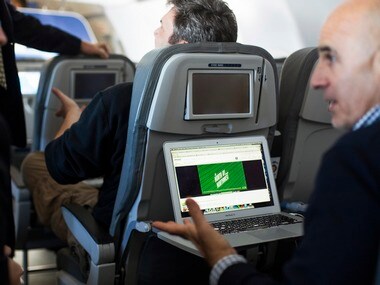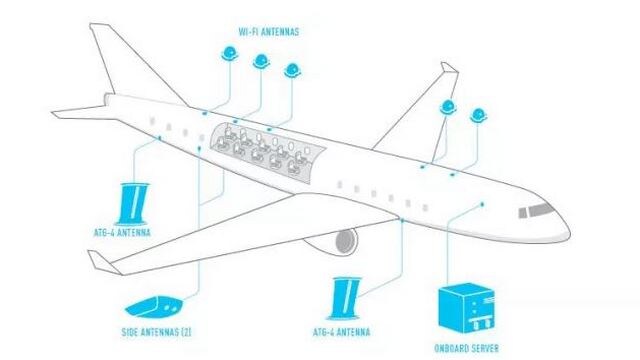Getting Wi-Fi access mid-air has been a proposal that has been in the talks in India since 2016. In May last year, the then joint director of civil aviation had hinted that in-flight Wi-Fi access would soon become a reality for Indian flyers.

Representative Image. Image: Reuters
Most recently, the Telecom Commission, the highest decision making body for the sector in India, has also approved in-flight connectivity facilitating both voice and data calls in Indian airspace, according to Telecom Secretary Aruna Sundararajan, reported IANS.
In-flight connectivity will be available once an aircraft reaches an altitude of 3,000 meters — the rule will maintain compatibility with terrestrial networks. A flight typically hits an altitude of 3,000 metres (around 10,00o feet) some five minutes after take-off, reported The Indian Express.
"Almost all recommendations by the Telecom Regulatory Authority of India (Trai) on this have been accepted. We are expediting the process (to start) and within three months it should be ready," Sundararajan told reporters after a meeting on Tuesday.
But how exactly does in-flight Wi-Fi work though?
There are many international airlines that provide Wi-Fi on-board. Airplane Wi-Fi works on the same basic principles as the those on the ground. Most of the times airplanes use the same towers that provide wireless data to your laptops or smartphones, when on the ground. Base stations on the ground communicate with the antennas placed on the underside of the planes which gets Wi-Fi on board (this is under 10,000 feet altitude). As you may have guessed, it doesn't really augur well for high speed internet due to the speeds at which planes are flying. There has to be a large number of towers and seamless handover to maintain a fast connection. Just like on the ground, if the antennas are not connected to any base station on ground, there will be no internet connectivity.
This can be an issue if you are over a sea body or out of range of the ground network due to the altitude. That's when the other way to get internet kicks in, which is via satellites in the geostationary orbit. The antennas on top of the planes kick into action then, communicating with orbitting satellites which provide internet (generally over 20,000 ft altitude). These are the same satellites that are used for TV signals, weather forecasting and so on.

Example of antenna layout for communicating with on-ground towers Image: Gogo
Unlike internet on the ground, the one mid-air is generally slower as it is a shared connection for the entire flight. Also, with so many people in the flight and constant moving around, the signals aren't the strongest. Speeds can therefore vary from seat to seat. So if you wanted to stream and binge on that Netflix series on a Trans-Atlantic flight, you can forget that. But it works great for working with emails or communicating using messenger or basic internet surfing.
Another thing to keep in mind is that in-flight Wi-Fi, unlike its on-ground alternative, is Only some airlines are offering it for free to certain customers or on certain routes in certain geographical areas, where the provider might have their towers. Some of these airlines include, Qatar Airways, Emirates, JetBlue Airways, Turkish Airlines, China Eastern. But of course there are conditions attached.
One also needs to understand that placing antennas on the plan involves additional design changes on the plane body, which increases air drag as these antennas are attached externally to the plane. This means more fuel will be required to fly this plane, which ultimately translates to higher costs for the passenger.
In the US, it is Gogo which provides majority of in-flight Wi-Fi and it has plans that can be bought before you board a plane (the one with which Gogo has partnerships such as Delta Air Lines, United Airlines, American Airlines and Virgin America) or those you can buy on-board (which is relatively more expensive). Since it has little competition, it can decide the rates, which are generally on the expensive side.
As far as India is concerned, there is still no clarity as to whether telecom service providers will have to pay separate licensing fees to provide in-flight Wi-Fi. Or is foreign players (in partnership with Indian telcos) will be allowed to provide internet services in flight.
Earlier this year, director general of the Cellular Operators Association of India (COAI) Rajan Mathews had said that the body will not support the creation of a separate category for in-flight connectivity service. Mathews said that in-flight connectivity must be provided on the basis of on-ground licences.
Updated Date: May 04, 2018 09:45 AM